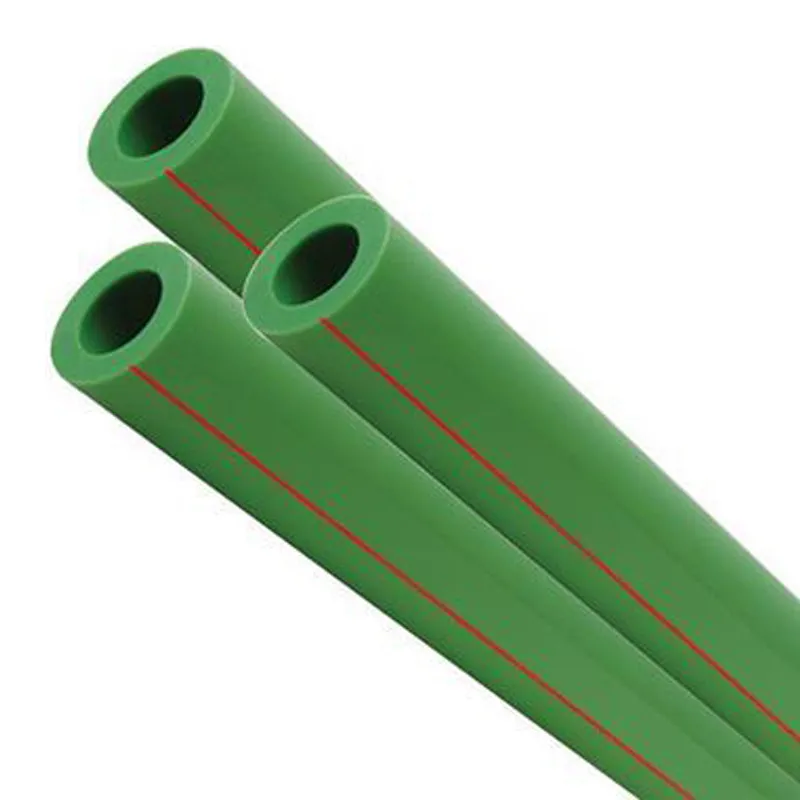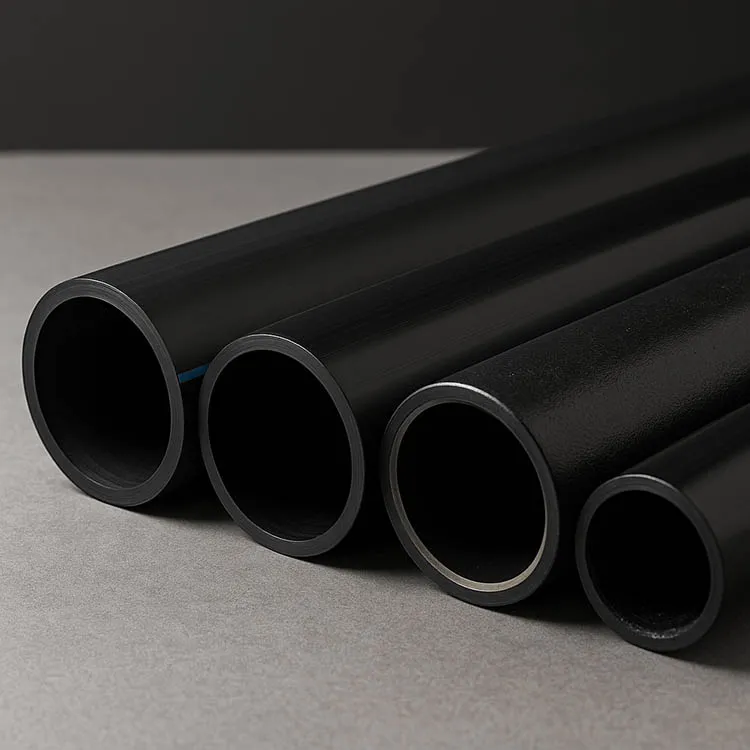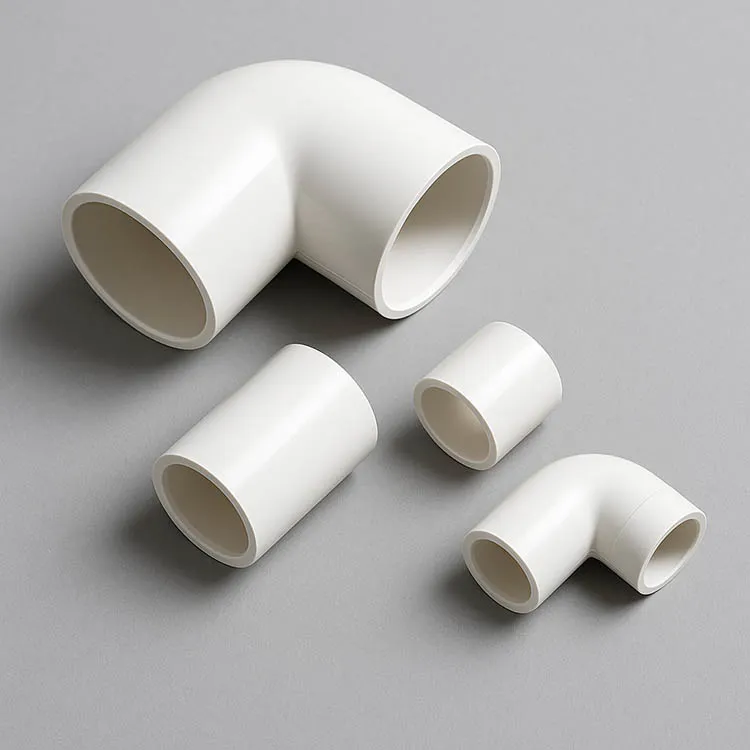PVC electrical conduit pipes made of polyvinyl chloride as the main raw material, added with a proper amount of special resist, extruded and formed, and used to protect and ensure the wiring of wires or cables in construction electrical installation projects. It allows the penetration of wires or cables. It is mainly used for electrical and communication cable casings, commonly known as PVC electrical conduit pipe, flame-retardant wire pipes, and rodent-proof pipes. It is mainly suitable for threading, such as wires, audio cables, video cables, telephone cables, and so on.
Product features of PVC electrical conduit pipes:
1. Good insulation performance: PVC electrical conduit pipe has good insulation, high current breakdown voltage resistance, can withstand 25 kV voltage without being broken down, and the bushing has no danger of electrification.
2. Strong impact resistance: PVC electrical conduit pipes can withstand pressure, and can be hidden in concrete, not afraid of damage by pressure and impact.
3. Good fire performance: PVC conduit pipe has a high oxygen index and is flame retardant, and it will self-extinguish instantly when it leaves the flame.
4. Moisture-proof, acid, and alkali resistance: electrical upvc conduit pipe are moisture-proof and will not rust like metal casings, and are resistant to acids, alkalis, and oils.
5. Anti-pest and rodents: PVC conduit pipes will not emit the smell that pests and rodents like, and can avoid damage by pests and rodents.
6. Easy to bend: Only one spring needs to be inserted into the electrical upvc conduit pipe, and it can be bent with light force by hand without heating.
175762.webp)
Features of PVC electric conduit pipes:
1. According to the electrician's default, the red warning color is used as a strong current mark, and the blue or cool color is a weak current mark.
2. Home decoration wiring is scientifically marked by the color separation of wires and pipes to achieve separate management of strong and weak current pipes, which can isolate the interference between strong and weak currents, and effectively avoid home theater audio distortion, telephone noise, and TV caused by the chaotic interference of strong and weak currents. Flickering screens, smart home control failures, network transmission data packet loss, and other phenomena have upgraded the quality of home life across the board.
3. The decoration project plans and marks the overall circuit design, piping, and wiring of the home, retains files, and reserves space for "in-management upgrades", which can improve the safety of electricity use, standardize construction site management, and facilitate identification, piping, and maintenance. And later home wiring upgrades to eliminate hidden dangers, safe and reliable.

Conduit is generally installed by electricians at the site of installation of electrical equipment. Its use, form, and installation details are often specified by wiring regulations, such as the US National Electrical Code (NEC) and other building codes.
Electrical conduit provides very good protection to enclosed conductors from impact, moisture, and chemical vapors. Varying numbers, sizes, and types of conductors can be pulled into a conduit, which simplifies design and construction compared to multiple runs of cables or the expense of customized composite cables. Wiring systems in buildings may be subject to frequent alterations. Frequent wiring changes are made simpler and safer through the use of electrical conduit, as existing conductors can be withdrawn and new conductors installed, with little disruption along the path of the conduit.
A conduit system can be made waterproof or submersible. Metal conduit can be used to shield sensitive circuits from electromagnetic interference, and also can prevent the emission of such interference from enclosed power cables. Non-metallic conduits resist corrosion and are lightweight, reducing installation labor costs.
When installed with proper sealing fittings, a conduit will not permit the flow of flammable gases and vapors, which provides protection from fire and explosion hazards in areas handling volatile substances.
231898.webp)
Some types of conduit are approved for direct encasement in concrete. This is commonly used in commercial buildings to allow electrical and communication outlets to be installed in the middle of large open areas. For example, retail display cases and open-office areas use floor-mounted conduit boxes to connect power and communications cables.
Both metal and plastic conduits can be bent at the job site to allow a neat installation without excessive numbers of manufactured fittings. This is particularly advantageous when following irregular or curved building profiles. Special tube bending equipment is used to bend the conduit without kinking or denting it.
The cost of conduit installation is higher than other wiring methods due to the cost of materials and labor. In applications such as residential construction, a high degree of physical damage protection may not be required, so the expense of conduit is not warranted. Conductors installed within the conduit cannot dissipate heat as readily as those installed in open wiring, so the current capacity of each conductor must be reduced (derated) if many are installed in one conduit. It is impractical, and prohibited by wiring regulations, to have more than 360 degrees of total bends in a run of conduit, so special outlet fittings must be provided to allow conductors to be installed without damage in such runs.
Some types of the metal conduit may also serve as a useful bonding conductor for grounding (earthing), but wiring regulations may also dictate workmanship standards or supplemental means of grounding for certain types. While metal conduits may sometimes be used as grounding conductors, the circuit length is limited. For example, a long run of the conduit as a grounding conductor may have too high electrical resistance, and not allow the proper operation of overcurrent devices on a fault.
843.webp)



939.webp)


294.webp)
476.webp)
420.webp)
146.webp)
460.webp)
287.webp)
274.webp)
688.webp)


